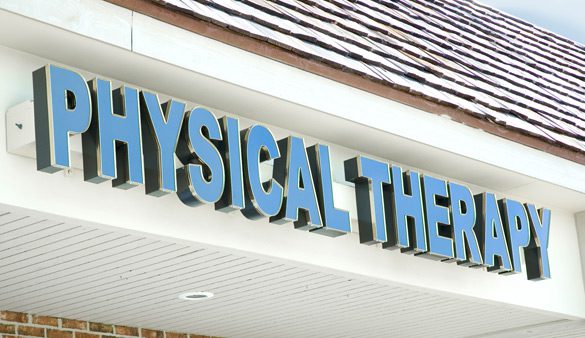Physical therapy is one of the most reliable and consistently recommended methods for encouraging healing, recuperation, and the development of muscle strength. PT is often effective because it’s so highly adaptable and customizable. If an exercise routine is too demanding, it can easily be adjusted to match a patient’s capabilities and comfort level. And many of the techniques learned during sessions can be applied to daily routines to further increase the benefits of this type of therapy.

Passive Physical Therapy
When physical therapy is purely therapeutic in nature, it’s passive. This type of PT involves techniques, or modalities, that are applied to a patient rather than requiring active involvement. The purpose of passive physical therapy is to encourage injured tissues to heal and reduce factors that often contribute to pain, such as inflammation. Passive PT typically involves a combination of techniques, including:
- Hot and cold therapy
- TENS (transcutaneous electrical nerve stimulation)
- Iontophoresis (steroids delivered through the skin)
- Massage therapy
Active Physical Therapy
Recovery from an injury sometimes involves a period of inactivity and rest. After the initial healing, prolonged rest can weaken muscles and contribute to other aches and pains. Ligaments, tendons, and other tissues need to retain enough strength to provide sufficient support to joints and bones. Specific exercises and routines are a big part of active PT, with possibilities including:
- Core strengthening exercises
- Low-impact aerobic conditioning
- Range-of-motion exercises
- Stretching movements

Personalizing PT Sessions
The number of sessions a patient needs will vary based on the reason for PT. For instance, someone recovering from a sports-related injury may benefit from an intensive rehab program while someone recovering from spine surgery would likely benefit from a slower pace. With personal injuries, physical therapy sessions may be a combination of both passive and active techniques, depending on the nature of the injuries and the specific therapeutic needs of the patient.
Determining Pain Sources
Part of the physical therapy process is determining how a personal injury is affecting the body. Once likely causes of discomfort are identified, a treatment plan can be prepared based on those results. It’s a process that often involves collaboration with a patient’s doctor and additional testing to rule out or confirm potential sources of pain.
Short-Term and Long-Term Benefits
The immediate goal with physical therapy is to help a patient reach a point where pain becomes manageable or goes away entirely. As progress is made, patients often learn ways to avoid further injury, such as making modification to regular activities, improving posture, and developing core muscle strength. Many of these techniques and preventative measures can be translated to everyday life to further reduce the risk of re-injury.
Effective physical therapy techniques may help some patients avoid surgery that’s not immediately necessary. Increased strength, flexibility, range-of-motion, and mobility often lead to improvements with quality of life and may relieve anxiety and stress. PT is also highly adaptable in the sense that newer techniques like electric stimulation therapy can be combined with proven methods to improve results and provide more options for relief and recovery.
